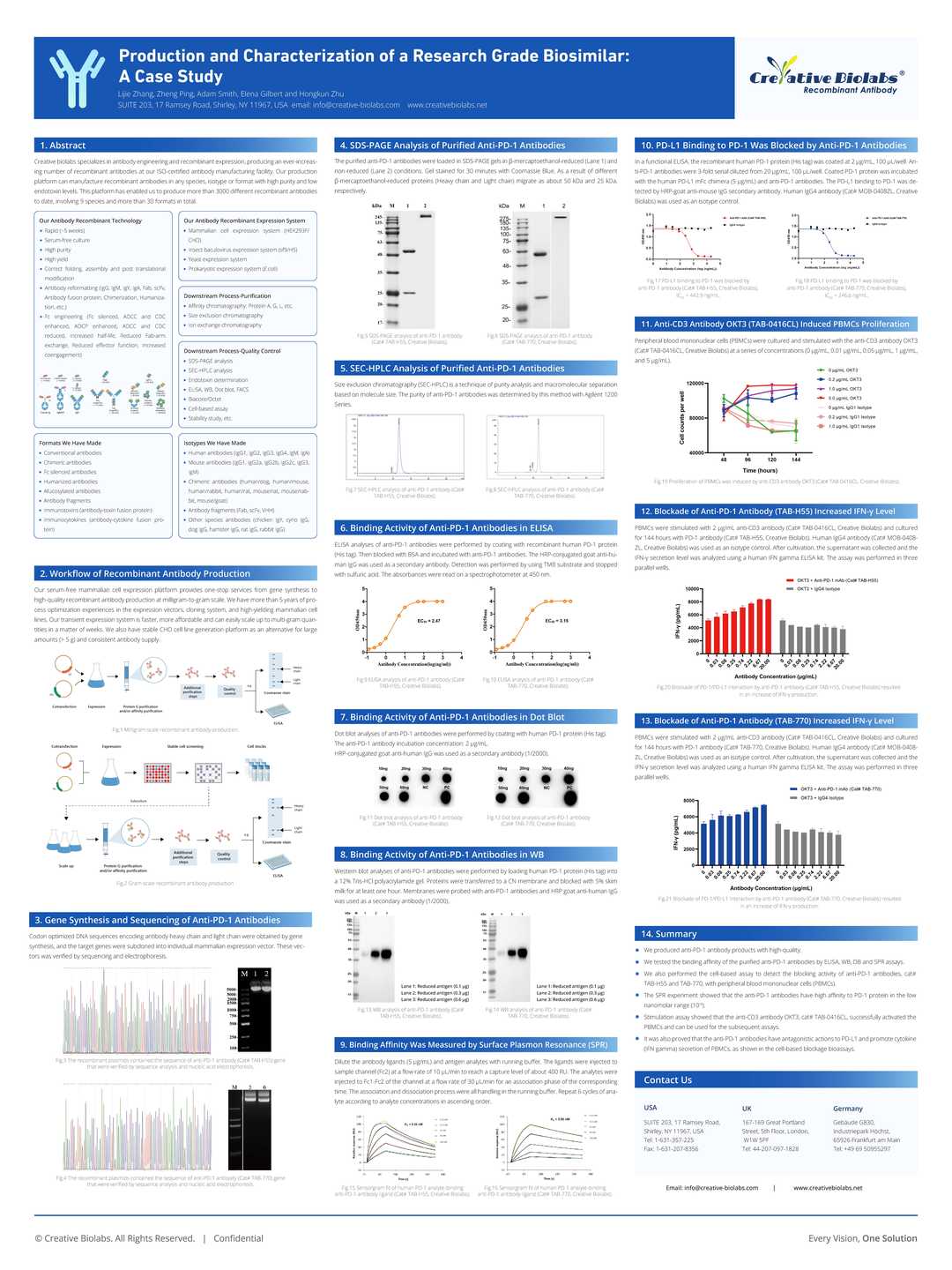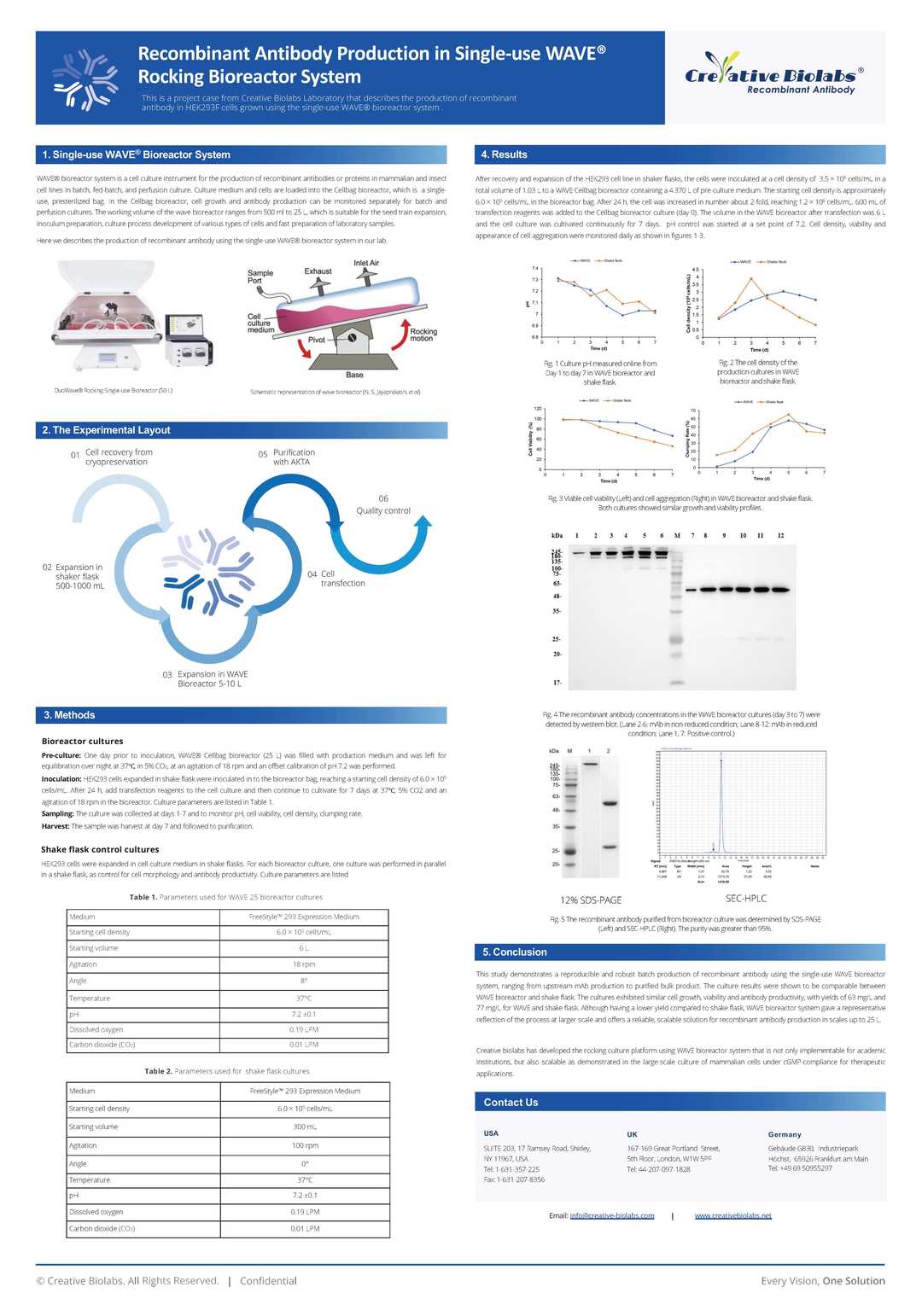Mouse Anti-PF4 Recombinant Antibody (clone KKO)
CAT#: PABL-299
Recombinant Mouse Antibody (KKO) is capable of binding to PF4.









Specifications
- Immunogen
- Human platelet factor 4
- Host Species
- Mouse
- Type
- Mouse IgG2b kappa
- Specificity
- Human PF4
- Species Reactivity
- Human
- Clone
- KKO
- Applications
- ELISA, FuncS
Product Property
- Purity
- >95% as determined by SDS-PAGE and HPLC analysis
- Concentration
- Please refer to the vial label for the specific concentration.
- Buffer
- PBS
- Preservative
- No preservatives
- Storage
- Centrifuge briefly prior to opening vial. Store at +4°C short term (1-2 weeks). Aliquot and store at -20°C long term. Avoid repeated freeze/thaw cycles.
Target
Customer Review
There are currently no Customer reviews or questions for PABL-299. Click the button above to contact us or submit your feedback about this product.
Cite This Product
To accurately reference this product in your publication, please use the following citation information:
(Creative Biolabs Cat# PABL-299, RRID: AB_3111646)
Submit Your Publication
Published with our product? Submit your paper and receive a 10% discount on your next order! Share your research to earn exclusive rewards.
Downloadable Resources
Download resources about recombinant antibody development and antibody engineering to boost your research.
Product Notes
This is a product of Creative Biolabs' Hi-Affi™ recombinant antibody portfolio, which has several benefits including:
• Increased sensitivity
• Confirmed specificity
• High repeatability
• Excellent batch-to-batch consistency
• Sustainable supply
• Animal-free production
See more details about Hi-Affi™ recombinant antibody benefits.
Datasheet
MSDS
COA
Certificate of Analysis LookupTo download a Certificate of Analysis, please enter a lot number in the search box below. Note: Certificate of Analysis not available for kit components.
See other products for "Clone KKO"
- CAT
- Product Name
See other products for "PF4"
Select a product category from the dropdown menu below to view related products.
| CAT | Product Name | Application | Type |
|---|---|---|---|
| NAB-1874-VHH | Recombinant Anti-Human PF4 VHH Single Domain Antibody | IHC, IP, FC, Neut, FUNC | Llama VHH |
| CAT | Product Name | Application | Type |
|---|---|---|---|
| MOB-1107z | Mouse Anti-PF4 Recombinant Antibody (clone 39G3) | WB, IP, IF, ELISA | Mouse IgG1, κ |
| MOB-1884MZ | Recombinant Mouse Anti-Human PF4 Antibody (clone SUP) | ELISA, FC, ICC, IF, IHC-P, WB | Mouse antibody |
| HPAB-0065-WJ | Mouse Anti-PF4 Recombinant Antibody (clone 16D6-3) | ELISA, WB | Mouse IgG |
| PABS-0118 | Mouse Anti-PF4 Recombinant Antibody (PABS-0118) | ELISA, FuncS | Mouse IgG |
| VS3-XY3462 | Rabbit Anti-PF4 Recombinant Antibody (clone R09-7H9) | WB, IHC-P, IP | Rabbit IgG |
| CAT | Product Name | Application | Type |
|---|---|---|---|
| PSBL-299 | Mouse Anti-PF4 Recombinant Antibody (clone KKO); scFv Fragment | ELISA, FuncS | Mouse scFv |
| HPAB-0065-WJ-S(P) | Mouse Anti-PF4 Recombinant Antibody (clone 16D6-3); scFv Fragment | ELISA, WB | Mouse scFv |
| PSBS-0118 | Mouse Anti-PF4 Recombinant Antibody; scFv Fragment (PSBS-0118) | ELISA, FuncS | Mouse scFv |
| CAT | Product Name | Application | Type |
|---|---|---|---|
| PFBL-299 | Mouse Anti-PF4 Recombinant Antibody (clone KKO); Fab Fragment | ELISA, FuncS | Mouse Fab |
| HPAB-0065-WJ-F(E) | Mouse Anti-PF4 Recombinant Antibody (clone 16D6-3); Fab Fragment | ELISA, WB | Mouse Fab |
| PFBS-0118 | Mouse Anti-PF4 Recombinant Antibody; Fab Fragment (PFBS-0118) | ELISA, FuncS | Mouse Fab |
| CAT | Product Name | Application | Type |
|---|---|---|---|
| MOR-2667 | Hi-Affi™ Recombinant Rabbit Anti-PF4 Monoclonal Antibody (DS2667AB) | WB, IHC, IP | IgG |
| CAT | Product Name | Application | Type |
|---|---|---|---|
| VS-0525-XY5317 | Anti-PF4 Immunohistochemistry Kit | IHC | |
| VS-0525-XY5318 | Anti-Rat PF4 Immunohistochemistry Kit | IHC |
| CAT | Product Name | Application | Type |
|---|---|---|---|
| VS-0625-YC252 | Recombinant Anti-PF4 Eliminating Antibody, pH-Sensitive (16D6-3 var.) | Antigen-Sweeping In Vivo. | Mouse IgG |
Popular Products

Application: Neut, ELISA, IF, IP, FuncS, FC, ICC

Application: IF, IP, Neut, FuncS, ELISA, FC, ICC

Application: IP, IF, FuncS, FC, Neut, ELISA, ICC

Application: WB, ELISA, FC, IP, FuncS, IF, Neut

Application: ELISA, FC, IP, FuncS, IF, Neut, ICC

Application: ELISA, IHC, FC, IP, IF, FuncS

Application: ELISA, FC, WB, Inhib, IHC

Application: ELISA, Block, WB, FC, IP
For research use only. Not intended for any clinical use. No products from Creative Biolabs may be resold, modified for resale or used to manufacture commercial products without prior written approval from Creative Biolabs.
This site is protected by reCAPTCHA and the Google Privacy Policy and Terms of Service apply.

















-3-1.png)










